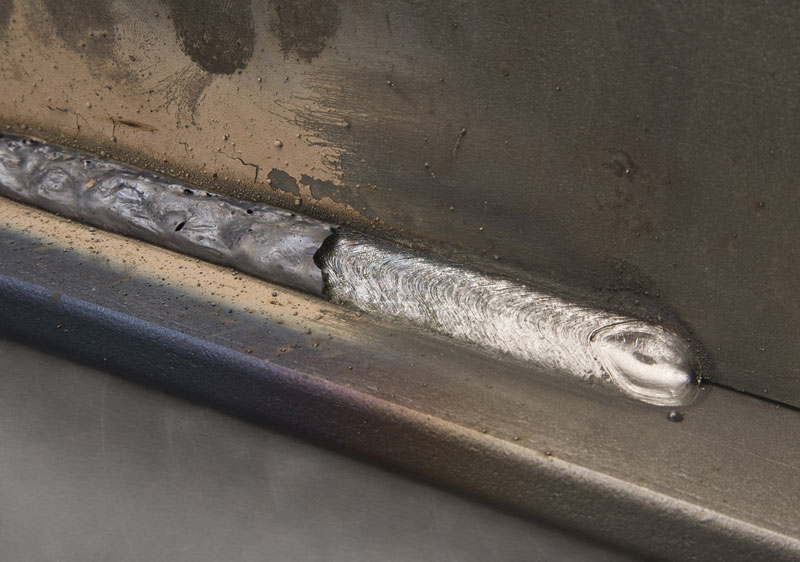Porosity in Welding: Identifying Common Issues and Implementing Finest Practices for Prevention
Porosity in welding is a prevalent concern that commonly goes undetected till it causes significant problems with the honesty of welds. This typical issue can jeopardize the strength and durability of welded structures, posturing safety threats and resulting in expensive rework. By recognizing the source of porosity and applying efficient prevention strategies, welders can significantly enhance the high quality and dependability of their welds. In this discussion, we will explore the essential variables adding to porosity development, analyze its damaging results on weld efficiency, and talk about the most effective techniques that can be embraced to reduce porosity occurrence in welding processes.
Typical Reasons For Porosity

An additional frequent culprit behind porosity is the visibility of pollutants on the surface area of the base metal, such as oil, grease, or rust. When these pollutants are not efficiently gotten rid of prior to welding, they can vaporize and become caught in the weld, creating defects. Furthermore, using unclean or damp filler materials can introduce contaminations into the weld, adding to porosity concerns. To alleviate these typical causes of porosity, extensive cleaning of base steels, appropriate shielding gas selection, and adherence to optimum welding parameters are essential practices in achieving high-quality, porosity-free welds.
Influence of Porosity on Weld Top Quality

The presence of porosity in welding can significantly compromise the structural stability and mechanical properties of welded joints. Porosity develops spaces within the weld steel, compromising its total stamina and load-bearing ability. These gaps work as anxiety concentration points, making the weld a lot more prone to cracking and failure under applied loads. Additionally, porosity can reduce the weld's resistance to deterioration and various other environmental aspects, even more decreasing its durability and efficiency.
Welds with high porosity levels have a tendency to display reduced impact stamina and decreased capability to deform plastically before fracturing. Porosity can impede the weld's ability to properly send pressures, leading to early weld failing and potential security hazards in critical frameworks.
Finest Practices for Porosity Avoidance
To boost the architectural honesty and top quality of welded joints, what particular procedures can be applied to minimize the occurrence of porosity during the welding procedure? Utilizing the appropriate welding method for the details material being welded, such as adjusting the welding angle and gun position, can even more stop porosity. Routine examination of welds and prompt remediation of any type of problems determined during the welding process are vital methods to stop porosity and create high-grade welds.
Importance of Proper Welding Strategies
Executing correct welding methods is paramount in making certain the structural honesty and high quality of bonded joints, developing upon the structure of efficient porosity prevention measures. Extreme heat can lead to boosted porosity due to the entrapment of gases in the weld pool. Furthermore, making use of the suitable welding criteria, such as voltage, present, and take a trip speed, is important for attaining sound welds with marginal porosity.
Moreover, the choice of welding process, whether it be MIG, TIG, or stick welding, ought to straighten with the particular demands of the task to guarantee ideal outcomes. Proper cleaning and prep work of the base metal, in addition to picking the best filler product, are additionally important elements of proficient welding techniques. By sticking to these ideal practices, welders can reduce the danger of porosity development and generate top quality, navigate to these guys structurally sound welds.

Checking and Quality Control Steps
Quality assurance actions play an important duty in validating the integrity and dependability of welded joints. Checking treatments are necessary to spot and avoid porosity in welding, making sure the stamina and check my source sturdiness of the end product. Non-destructive testing techniques such as ultrasonic testing, radiographic testing, and visual examination are typically employed to recognize potential defects like porosity. These techniques enable the analysis of weld high quality without compromising the stability of the joint. What is Porosity.
Performing pre-weld and post-weld examinations is likewise crucial in maintaining quality control standards. Pre-weld inspections entail validating the products, devices settings, and tidiness of the workspace to avoid contamination. Post-weld examinations, on the other hand, analyze the last weld for any type of problems, consisting of porosity, and confirm that it fulfills specified criteria. Implementing a thorough quality control strategy that includes complete testing procedures and examinations is vital to decreasing porosity issues and ensuring the total high quality of bonded joints.
Conclusion
In conclusion, porosity in welding can be a typical problem that influences the top quality of welds. By recognizing the common root causes of porosity and executing finest methods for prevention, such as appropriate welding methods and screening procedures, welders can make sure top quality and trusted welds. It is important Web Site to prioritize avoidance methods to reduce the incident of porosity and preserve the stability of welded structures.